The nuclear charge (Ze) is non uniformlly distribute with in a nucleus of radius r. The charge density ρ(r) (charge per unit volume) is dependent only on the radial distance r form the centre of the nucleus s shown in figure. The electric field is only along the radial direction.
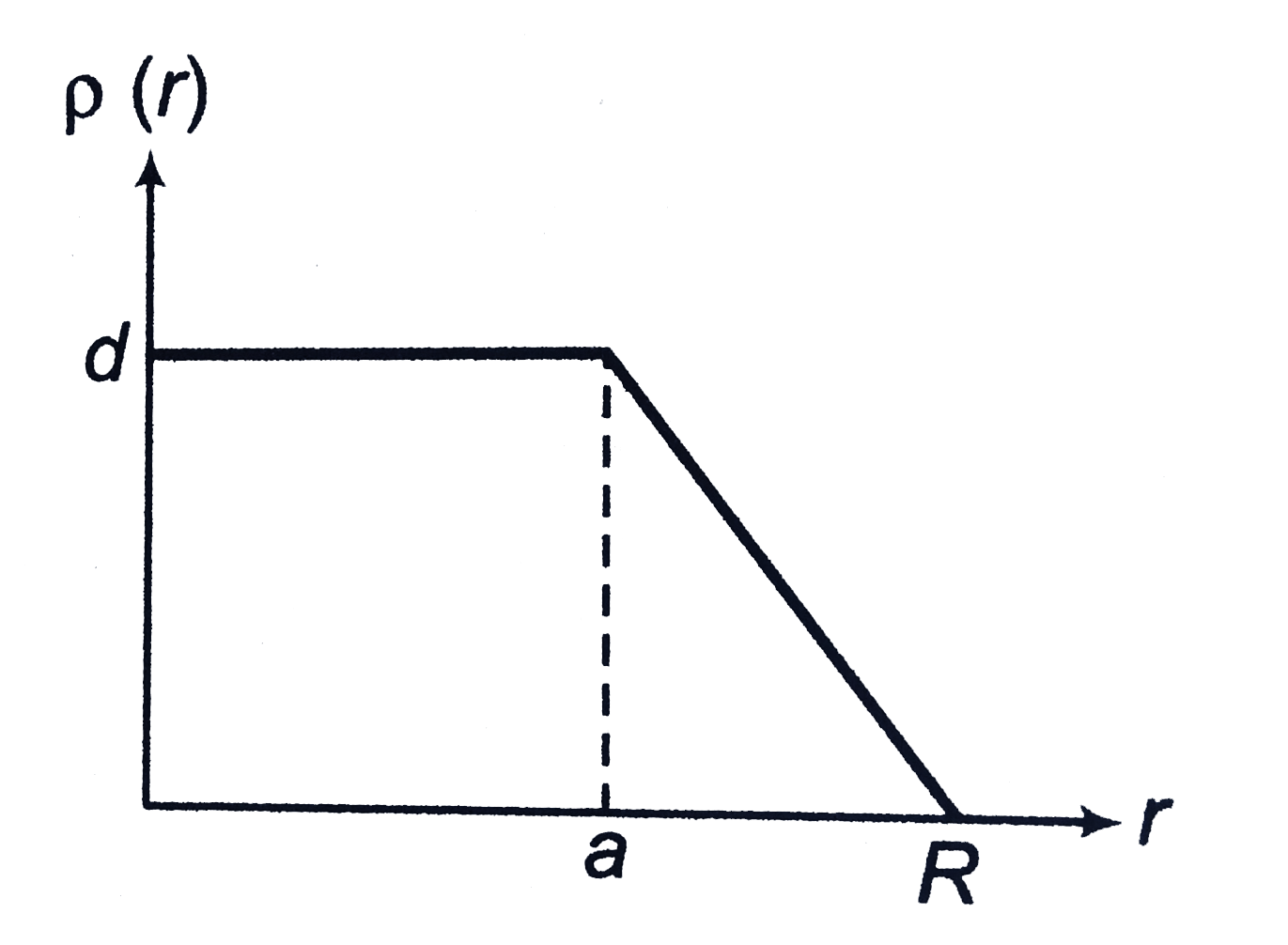
The electric field at r=R is Solution in Gujrati
Independent of a
Directly proportional to a
Directly proportional to a2
Inversely proportional to a
The correct Answer is:A
E(4πR2)=(Ze)∈0⇒E=Ze4π∈0R2
⇒ Independent of a
Topper's Solved these Questions
- MISCELLANEOUSBOOK - ALLEN CHAPTER - MISCELLANEOUSEXERCISE - SUBJECTIVE QUESTION
9 Videos
- MISCELLANEOUSBOOK - ALLEN CHAPTER - MISCELLANEOUSEXERCISE - PHY
68 Videos
- MISCELLANEOUSBOOK - ALLEN CHAPTER - MISCELLANEOUSEXERCISE - MATCH THE COLUME TYPE
1 Videos
- KINEMATICS (MOTION ALONG A STRAIGHT LINE AND MOTION IN A PLANE)BOOK - ALLEN CHAPTER - KINEMATICS (MOTION ALONG A STRAIGHT LINE AND MOTION IN A PLANE)EXERCISE - BEGINNER S BOX-7
8 Videos
- PHYSICAL WORLD, UNITS AND DIMENSIONS & ERRORS IN MEASUREMENT BOOK - ALLEN CHAPTER - PHYSICAL WORLD, UNITS AND DIMENSIONS & ERRORS IN MEASUREMENT EXERCISE - EXERCISE-IV
7 Videos
Similar Questions
A conducting sphere S1 of radius r is attached to an insulating handle. Another conduction sphere S2 of radius R is mounted on an insulating stand. S2 is initially uncharged. S1 is given a charge Q brought into contact with S2 and removed. S1 is recharge such that the charge on it is again Q and it is again brought into contact with S2 and removed. This procedure is repeated n times.
a. Find the electrostatic energy of S2 after n such contacts with S1.
b. What is the limiting value of this energy as n→∞ ?
View SolutionFind roots equation 2x2−x−3=0.
View SolutionFour charges Q1,Q2,Q3 and Q4 oof same magnitude are fixed along the x axis at x=−2a,−a,+a and +2a, respectively. A positive charge q is placed on the positive y axis at a distance b>0. Four options of the signs of these charges are given in List I. The direction of the forces on the charge q is given in List II. Match List I with List II and select the correct answer using the code given below the lists.
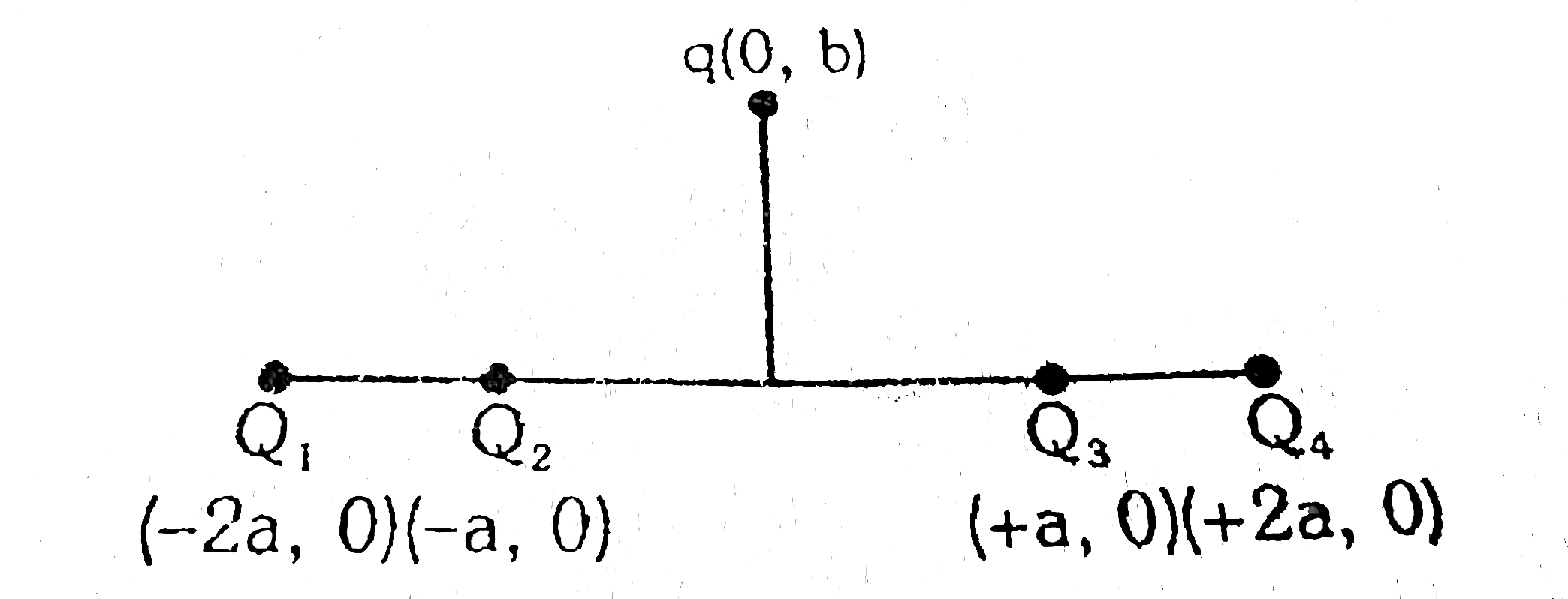
List-IList-II(P)Q1,Q2,Q3,Q4all positive(1)+x(Q)Q1,Q2 positive, Q3,Q4 negative(2)−x(R)Q1,Q4 positive ,Q2,Q3 negative(3)+y(S)Q1,Q3 positive , Q2,Q4 negative(4)−y
View SolutionA football player kicks a ball at an angle of 30∘ with an initial speed of 20 m/s. Assuming that the ball travels in a vertical plane, calculate (a) the time at which the ball reaches the highest point (b) the maximum height reached (c) the horizontal range of the ball (d) the time for which the ball is in the air, (g=10m/s2)
View SolutionAssertion : Gravitational forces do not depend on the medium between the masses.
Reason : Mediating particle responsible for gravitational force is graviton.
View SolutionThe nuclear charge ( Ze ) is non uniformlly distribute with in a nucleus of radius r. The charge density rho(r) (charge per unit volume) is dependent only on the radial distance r form the centre of the nucleus s shown in figure. The electric field is only along the radial direction. The electric field at r=R is
View SolutionThe nuclear charge (Ze) is non uniformly distributed within a nucleus of radius r. The charge density ρ(r) (charge per unit volume) is dependent only on the radial distance r form the centre of the nucleus as shown in figure. The electric field is only along the radial direction. For a=0 the value of d (maximum value of ρ as shown in the figure) is
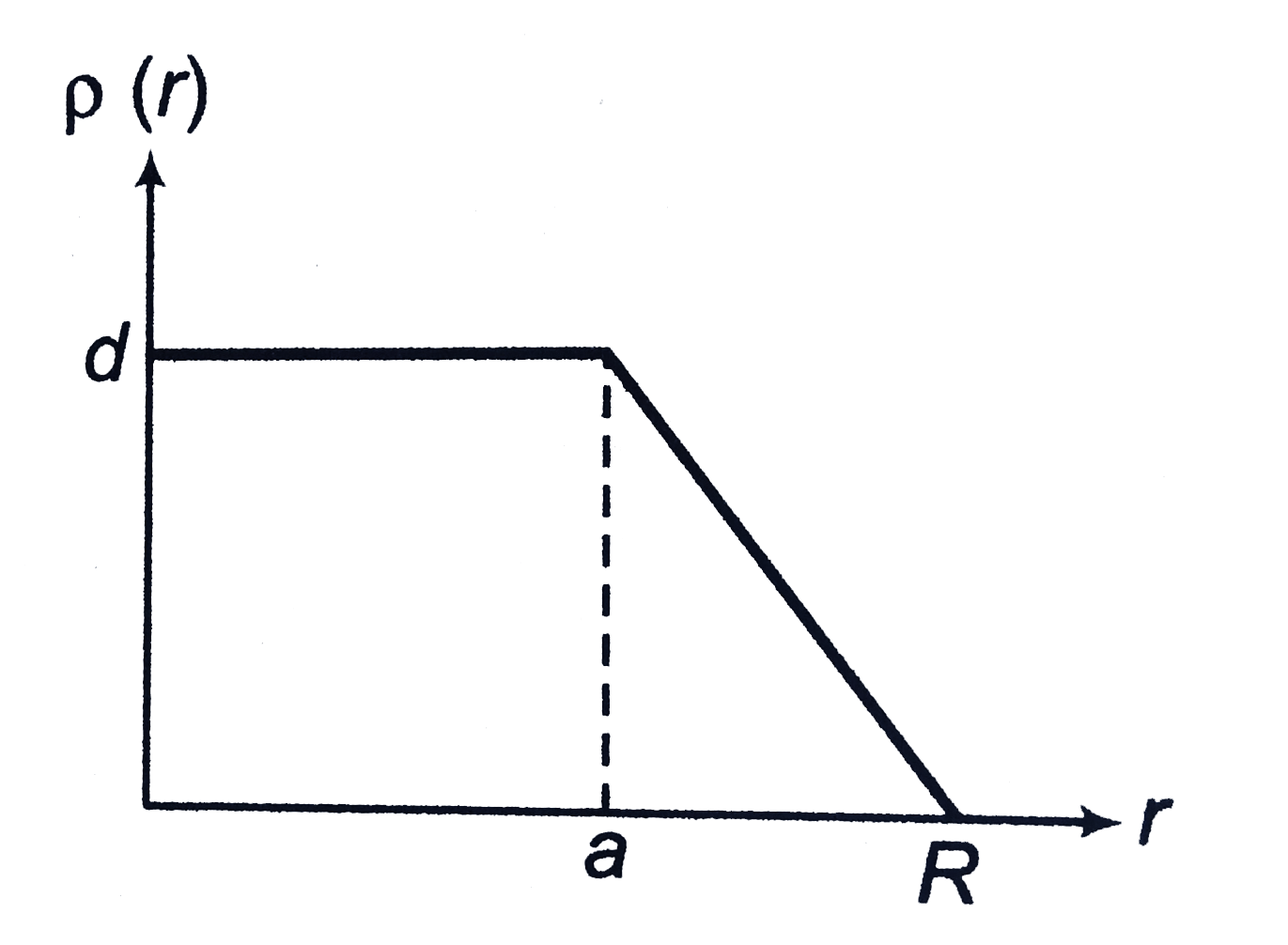
View SolutionThe nuclear charge ( Ze ) is non uniformlly distribute with in a nucleus of radius r. The charge densilty rho(r) (charge per unit volume) is dependent only on the radial distance r form the centre of the nucleus s shown in figure. The electric field is only along the radial direction. The electric field within the nucleus is generaly observed to be linearly dependent on r. This implies
View SolutionA solid non-conduction cylinder of radius R is charge such that volume charge density is proporation to r where r is distance from axis. The electric field E at a distance r(r lt R) well depend on r as.
View Solutionनाभिकीय आवेश (Ze), R त्रिज्या वाले नाभिक के भीतर असमान रूप से वितरित रहता हैं। आवेश घनत्व p(r) (अर्थात् एकांक आयतन में आवेश की मात्रा) नाभिक के केन्द्र से त्रिज्य दूरी (r) पर ही निर्भर करता है। वैद्युत क्षेत्र त्रिज्य दिशा के अनुदिश है।
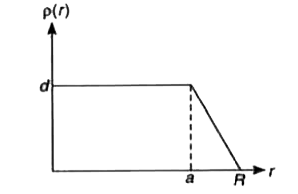
दूरी r= R पर वैघुत क्षेत्र है।
View Solutionनाभिकीय आवेश (Ze), R त्रिज्या वाले नाभिक के भीतर असमान रूप से वितरित रहता हैं। आवेश घनत्व p(r) (अर्थात् एकांक आयतन में आवेश की मात्रा) नाभिक के केन्द्र से त्रिज्य दूरी (r) पर ही निर्भर करता है। वैद्युत क्षेत्र त्रिज्य दिशा के अनुदिश है।
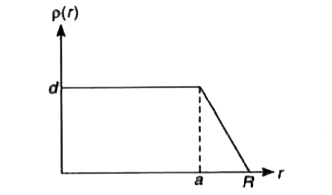
a= 0 के लिए d (p का अधिकतम मान) का मान है।
View Solutionकिसी R त्रिज्या के नाभिक में नाभिकीय आवेश (Ze) आसमान रूप से वितरित है। आवेश घनत्व ρ(r) का वितरण नाभिक के केंद्र से दूरी के फलन के रूप में चित्र में प्रदर्शित है। विद्युत क्षेत्र सिर्फ अरीय दिशा में उपस्थित है।
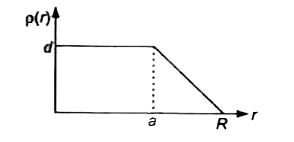
सामान्यतया नाभिक के अंदर विद्युत क्षेत्र का r के साथ रैखिक सम्बन्ध पाया जाता है। इससे प्रदर्शित है कि
View SolutionThe nuclear charge ( Ze ) is non uniformlly distribute with in a nucleus of radius r. The charge density rho(r) (charge per unit volume) is dependent only on the radial distance r form the centre of the nucleus s shown in figure. The electric field is only along the radial direction. The electric field at r=R is
View SolutionThe nuclear charge ( Ze ) is non uniformlly distribute with in a nucleus of radius r . The charge density rho(r) (charge per unit volume) is dependent only on the radial distance r form the centre of the nucleus s shown in figure. The electric field is only along the radial direction. For a=0 the value of d (maximum value of rho as shown in the figure) is
View SolutionThe nuclear charge ( Ze ) is non uniformlly distribute with in a nucleus of radius r. The charge densilty rho(r) (charge per unit volume) is dependent only on the radial distance r form the centre of the nucleus s shown in figure. The electric field is only along the radial direction. The electric field within the nucleus is generaly observed to be linearly dependent on r. This implies
View Solution
